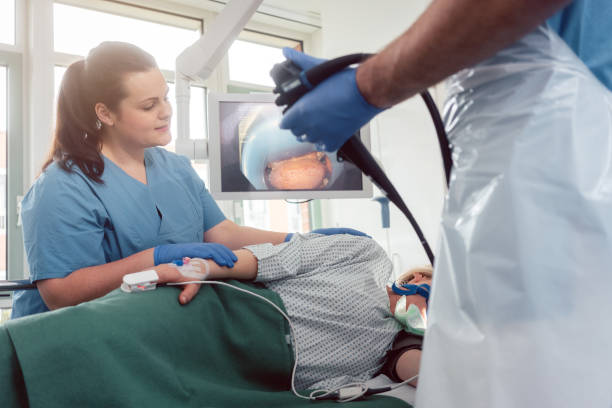What is Endoscopic Retrograde Cholangiopancreatography (ERCP) for Pancreas Disorder?
It is a procedure that is used for diagnosing and also treating the problems which occur in the pancreas. The condition might be in the duct of the pancreas itself.
Who Is The Right Candidate For ERCP?
RECP can be performed on any child no matter their age, which also includes infants and newborns. They are typically used for patients who have:
- If they have acute recurrent pancreatitis
- Chronic pancreatitis
- Gallstone disease, which causes pancreatitis
- Injuries to the duct
- Inflammatory disorders which affect the pancreas
- Strictures (narrowing) within the duct
- Stones blocking the duct of the pancreas
- Abnormal anatomy of the duct or pancreas
Visiting Gastroenterology Hospital in Ludhiana and diagnosing the problem is essential in order to treat it accordingly.
What Is The Procedure Of ERCP?
The Gastroenterologist in Ludhiana uses a special flexible and narrow tube that is attached to a video camera in ERCP. Under the influence of anesthesia, the doctor places the tube through the child’s mouth into the upper digestive system. The doctor is able to see the stones with the help of contrast dye and x-rays. They can also view the blockages or abnormal narrowing in the duct. In order to treat this condition, the gastroenterologist slides small tools for surgery via endoscope.
There are also some instances in which the ERCP is only used for diagnosing the problem and not treating it. That being said, there are more cases that would be treated with ERCP; some of the treatment with ERCP includes:
- Sphincterotomy: it is an incision that is used in increasing the size of the opening of the pancreatic duct.
- Stent placement: it is used for inserting a small, temporary, and plastic tube within the duct to ensure that the daring can take place.
- Stone extraction: it is performed to clear all the ducts of the stones.
- Stricture dilation: it is used for expanding or stretching an area in which the duct is abnormally small or narrow.
It is a procedure that can take at least 20 minutes minimum and two hours at max. It all depends on which kind of treatment you need to undergo.
After the surgery is performed, the doctor will have a conversation with the family members of the patient regarding the process. They will also inform them about the treatment that was conducted and what was found during the treatment and will also answer any questions they might have regarding the whole process. They will also make sure to give you some details about the anticipated recovery time, its healing process, and also the post-surgery plan for care, which might also include the requirement to undergo another ERCP.
What Is The Process Of The Recovery Period?
Soon after recovering from anesthesia or sedation, most the children are able to eat or drink normally after the procedure of ERCP. In most cases, they are allowed to leave the hospital the next day after staying there for overnight observation.
Some children might induce temporary complications, including ERCP-related pancreatitis, which is a temporary inflammation of the pancreas.
For All Intents And Purposes
It is not possible to target such compliance health conditions, especially in children, with over-the-counter medicines. That is why contact Ludhiana Gastro And Gynae Centre for the diagnosis and the treatment.


